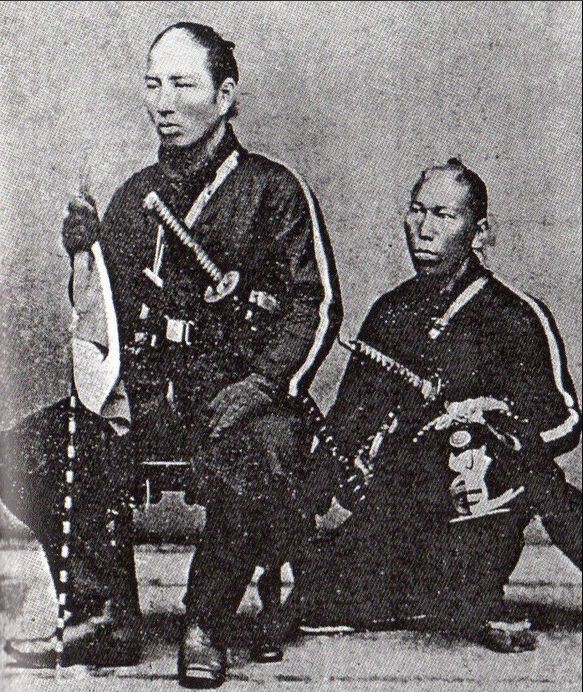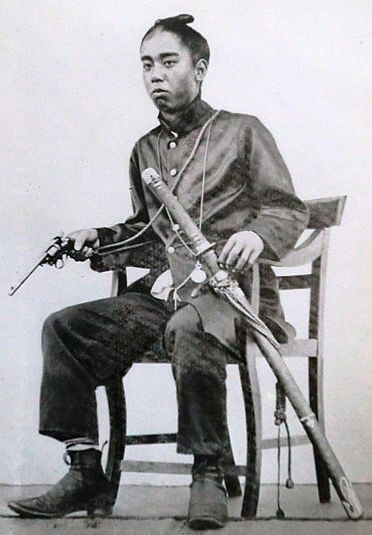-
Posts
1,690 -
Joined
-
Last visited
-
Days Won
11
Everything posted by Dave R
-

Kozuka & Kogai Slots in Saya. Who gets what?
Dave R replied to DTM72's topic in General Nihonto Related Discussion
Hiya Steve, I remember that article as well! I am pretty certain that it originated from Dr. Takeuchi, who has written a lot about Nihonto over the years, unfortunately even when bookmarked his writings tend to be fugitive on the internet. -
One of the arms fairs in the UK that I attended, a dealer had a sword from Ewart Oakeshott's collection, an actual Viking sword! Decent condition though not shiny and I got to hold that. I do sometimes wonder what a Japanese polisher could do with one of the better preserved Viking era swords?
-
There are a few swords in shirasaya that we know were taken into battle, usually (always?) with a leather combat cover sewn on and some form of haikan attached. Without a habaki or a fuchi of some sort it would have come apart in use. "Buy the blade, not the story!"
-
I have seen these on Japanese sites on Ebay described as arrowheads! I suspect they are actually marking knives or similar. Nice though, I might buy one at the right price.
-
Nick Komiya, a native Japanese speaker and researcher of the original late 19th and early 20th century documentation in Imperial Japanese archives.... You can find him here.. Japanese Militaria
-
The one I posted was just to show the type..... Below is the back-strap I was writing about.
-
-
-
My Komiya has just weighed in on that subject. Apparently it's the early version of army sunburst.
-
Going by the photo's (legal disclaimer) I would say that this is a post war assembly like the extensively discussed swords formerly known as "mystery swords"! A genuine wartime blade and possibly the saya, completed with a mix of parts from the post war era.
-

Your Thoughts on This Mumei Katana?
Dave R replied to Robert from Zama's topic in General Nihonto Related Discussion
The two small holes in the tsuba are often associated with swords from the Satsuma Han Samurai, but note not a "satsuma sword" in the usual sense. A paper string went through them to tie the sword into the saya. The idea was that Samurai from that Han were so short tempered that a little "check" was a good idea, but not enough of a check to prevent drawing when genuinely needed. Others reckon it's just for a sword knot in the usual sense.... -
It looks to me like someone took the real sword out of the box and dropped a fake in there. This could have been done anytime in the last 20 years or so when the Chinese wall-hanger industry went full on. Bloody annoying I know, especially if you paid for a real WW2 bring back! As to how we know, we see and handle real Nihonto and Gunto all the time, and see Chinese fakes all too often.
-

First post, Type 3 Gunto. Remove rust to expose mark?
Dave R replied to DavidB's topic in Military Swords of Japan
If it can scrape off with a piece of antler, bone or horn, then it needs to come off. Rust and patina are not the same thing. An interesting article from an authoritative source here. Oil your nakago – The Cutting Edge -
Factory made blade of "modern" (1930-40s) steel, so no need to get worried about an involved maintenance routine. Deal with active rust, oil it, enjoy it. No need to disassemble it there will be no signature on the tang, and by all accounts they are the devil to get back together again. There is lots of information on this forum about this type, and advice for looking after it.
-
Define "weapon oil", if you mean gun oil then for the most part they contain solvents to remove propellant residue and fouling from the projectile..... not the best oil for nihonto. I know some people use sewing machine oil, and "Choji" is in fact Tsubaki oil with a little Clove oil added, one story being that the clove was added to stop Mrs Samurai from cooking with it, and another story is it discouraged insects from eating the saya, and also reduced stickiness. In the Aoi-art video he uses Kurobara oil which is a commercial brand, and a mix of oils it is also the choice of Japanese Chef's and Carpenters for their blades. From what I can gather, Kurobara brand is mainly tsubaki with enough high grade mineral oil to reduce stickiness and a touch of perfume added. For what it's worth, it is my favoured oil for my collection.
-

Wakizashi Identification!
Dave R replied to Tokugawa Gord's topic in General Nihonto Related Discussion
Writing as someone who did also once buy a nihonto blade in type 95 mounts, I think it's a real blade abused and fitted up to sell. It could be Bubba or one of the (much) less scrupulous dealers. The nakago is too good for a cheap Chinese knock off in my opinion. -

Captured Japanese Sword used by an American in China
Dave R replied to Tonkotsu's topic in Military Swords of Japan
Very interesting! I suggest posting it on a dedicated militaria site such as Japanese Militaria for more input. Personally I love the collection you show here, and would like to see more about it. Sadly, bought at a "Good Will Store" is not a reliable provenance, and the old adage is "buy the blade not the story." Did this come with documentation. -
What happened to the wood work?
-
Can we see the tsuka, if the menuki match the rest you have something special.
-
The Satsuma Han was famous for the number of samurai there, and the more "relaxed status" they had, as in many were very poor and worked for a living as opposed to being retained. They were also known for keeping damaged swords in use with shabby koshirae, to the point that grinding a broken point down to the Ha was known as a Satsuma-age (= counter shortening). Reference here...http://www.ksky.ne.jp/~sumie99/suriage.html . My take is that Satsuma became a shorthand term, slang even, for a poor and shabby sword Photo's from the time show rebels of the civil wars with their own swords and usually western guns. That last photo is of the fortifications at Shiroyama, which was siege, not an open battle, Saigo Takamori died of a mortal wound from the IJA shelling of the position. Some debate whether he was finished off by his own hand or that of one of his men. There has been a fairly recent excavation of the site. rebel gun pits reveal a mixed variety of guns in use bought piecemeal from different countries. The final assault on the position was apparently launched by "Imperial Sword Armed Police" a unit that would reward more research.
-
I agree wholeheartedly with you there. Personally I think they are low class swords, held in the armoury and issued to the Ashigaru or low level Samurai as and when needed. They are always out of polish, and blades with chips or hagire, and the mounts are usually recycled from other swords, but always competently done. They are also fairly uniform and a definite type, which is why I see them as an issue item from a castle armoury. I have my own ideas as to why they are referred to as Satsuma, but like "type 3" it's a term hallowed by time and use.
-
Less of a repair, and more of an improvisation in the field, in my opinion. The haikan and koiguchi look like they were taken from a steel scabbard and put onto a purpose made wood and canvas one, which I think would have had a leather cover originally. Does it have an ishizuki? I wonder how many officers found their steel scabbard irksome when they had to leave their vehicles or horses and walk!
-
Lots of information here about "cleaning" which is not the same as polishing. Coarse cloth and alcohol are a decent start, Uchico for a shabby blade is never wrong. I have heard of other things being done, but I suggest caution and searching the subject here. Forging flaws are just part of the territory with nihonto, and so far no fatal flaws such as hagire. Have fun and enjoy your new (to you) blade. Don't forget to oil the blade....
-
It's a quick and dirty fix to make the blade more attractive to the uninitiated. Very few if any fairs have good enough lighting to properly judge a blade and an acid wash brings up the detail making the blade more saleable. It's also cheaper than having a proper polish.... You would (or would not) be surprised at how many blades on a dealers table have had this done.











